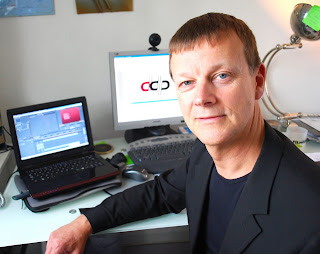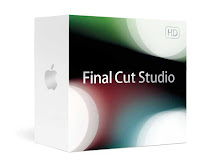Visitors to IBC will be able to get free camera, lighting and general production and post-production training (including seminars, small group sessions and 15-minute one-to-one opportunities from the UrbanFox). IBC has been running limited post-production training for several years, but the rest is new....
The interesting sessions take place in IBC's new
Production Village (in Hall 9 - where Sony used to be). It will offer a seriously packed schedule of free, independent training sessions from some of the best in the business, as well as manufacturer-led sessions and the opportunity to compare cameras and equipment from differnet manufacturers side by side.

"The aim of the Production Village is to help people to improve their skills, irrespective of what lights or camera they are working with, particularly with reference to HD," explained David Dawson-Pick (left), of DDP Enterprises, which is organising the free training sessions.
The training should be applicable to a wide range of equipment, and all the sessions (including one-to-ones) are on the
IBC website (click on IBC Training - it doesn't allow deep linking) or at the reception desk on site.
Tutors include:
Christina Fox, of
UrbanFox.TV, who will be covering low-budget HD camcorders, audio, shooting interviews, camera support and production on a budget; DoP
Jonathan Harrison, who will be doing his renowned Lighting On The Run as a double-session (giving it the time it needs but usually doesn't get), plus seminars on soft lights, lighting in difficult locations (such as jungles), and energy-saving lighting, as well as daily lighting clinics; Multi-camera expert,
Peter Taylor, who has worked on such events as Glastonbury and the Proms for the BBC, will have sessions on OBs and multi-camera lighting and lenses; Technology specialist,
Alan Roberts will cover colour science, how to set up an HD camera, test cards, operational tricks, and all your high-end camera questions (he will also be launching his new book at IBC, in conjunction with the EBU, called
Circles of Confusion - an in-depth look at how to get the best out of HD); Drama DoP,
Paul Wheeler, who also teaches at the NFTS, will reveal how to get a particular look using lenses and filters, how to pick the right high-end camera for the job, and location workflow.
Visitors to the Village will be able to compare cameras and other equipment from different manufacturers (such as Anton/Bauer, Arri, Autoscript, Canon, JVC, Lite Panels, Panasonic, P+S Technik, and Vinten), while a BAFTA and RTS-award winning make-up artist,
Shaunna Harrison, will demonstrate air-brushing techniques and prosthetics, so that you can see how they look using different cameras and lighting. "That's enormously helpful with understanding how flesh tones come out and how to light for them, and so that you can understand the demands of the make-up artist," said Dawson-Pick.
The various trainers, and others, have also shot short video masterclasses, which will be viewable at IBC. The Post Production Training Zone, where you can find out more about Apple, Avid and Adobe software, is in Hall 7.
David Fox











